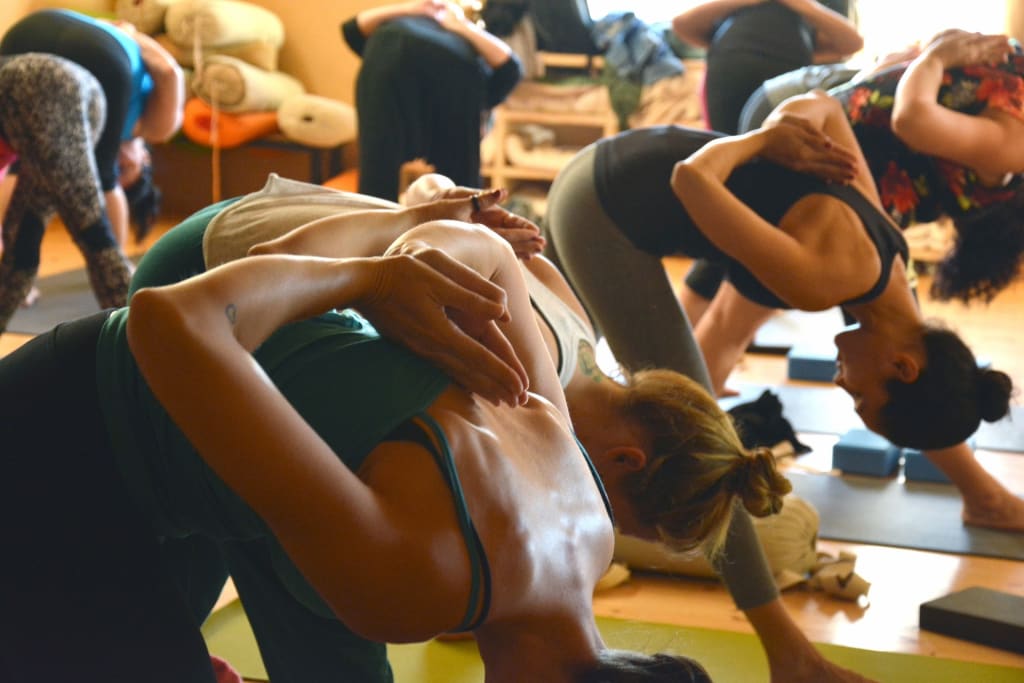Russians came to kill us
Title: Russians came to kill us. So it has a very direct impact. For several years before large scale war, Russia used information like a weapon of mass destruction. [News archive] The invasion, the attack that Russia promised would never happen has now started... Russia began its full scale invasion of Ukraine in February 2022 but for years it had been sowing the seeds for what it called a ‘special military operation’, with anti-Ukrainian messages directed towards its own people. I saw the same pattern when they were asked 'why are you fighting?', they answered the same. They told 'we saw on Russian TV how these Ukrainian fascists killed women and children and we can't stand it and that is why we decided to go to fight'. Now into the third year of the full scale war and also a crucial election year for democracies supporting Ukraine, the disinformation is intensifying and becoming more sophisticated. The way that we see it playing out in the United States is that the Russian government, which used to try to sow chaos by amplifying narratives on both sides of the political spectrum, is now laser-focused on amplifying narratives and supporting candidates that advocate for protectionist, more isolationist policies. I’m Babita Sharma and this is The Documentary: Whose Truth? from the BBC World Service. On this episode, the war between Russia and Ukraine and how disinformation is being weaponised to shake Western support. We meet a Nobel Prize laureate whose work is being undermined by Russian fake news and disinformation and we hear from those taking up the challenge of fighting it. Can the tidal wave of disinformation be stopped and what are the tools that are being used? [News archive] President Volodymyr Zelensky says Russia has committed the worst war crimes in Europe since 1945. During a graphic address to the United Nations... Our members found dead bodies of civilians who lay scattered around the streets until their liberation, we found the dead bodies of civilians in the gardens of their own households, we found the dead bodies of civilians, of men and women with their hands tied under their backs in the mass graves. We found the dead bodies of civilians in civilian cars, a whole family with children who were deliberately shot by Russian soldiers when they tried to escape from the dangerous zone. But I know that all this evidence will be essential for future investigation and justice. And also very important to present to the public in different countries. But I have no answer how to convince people who still believe that it’s a fake. Oleksandra Matviichuk is the founder of Ukraine's Center for Civil Liberties. The organisation was the co-recipient of the 2022 Nobel Peace Prize. Oleksandra stayed in her home city of Kyiv throughout the war documenting evidence of alleged war crimes committed in her country since 2014. One of the worst of these happened in Bucha, a suburb of the capital Kyiv occupied by Russian troops in March 2022. More than 400 people were killed there. Bodies were found in the street and in basements, many mutilated and burnt. Evidence came from on the ground reporters and was also verified using satellite imagery. Yet the facts were disputed by Russia. [News archive] What happened in Bucha is exactly false flag attack by Kyiv regime and its Western sponsors. The possible role of this provocation is horrifying and brings back the nightmares of the Nazi crimes during the Second World War. That was Russian ambassador Vasily Nebenzya claiming that the images coming from Bucha were faked. It’s part of the Russian narrative to justify its aggression. The message: Ukraine is a hostile neighbour, armed by the West and guided by fascist ideology. They based their thoughts on belief and it's a question of belief, it's something irrational, it's very difficult to influence to the core, especially when you're Russians. Because if you suddenly understand that you are not liberators, that you've killed men, women and children and this is not fake, which is presented by Ukrainian human rights defenders, it pushes you to some actions and people don't want to make actions. It's like also psychological mechanism of how to protect themselves, just to stay in the zone of comfort. And to say everything is lies, it's fake, I don't have to do something with it and still see themselves as good people. Much of Russian disinformation is meant for its own people in an increasingly controlled information landscape. But the disinformation around Bucha spread globally using a variety of different messages. Anastasiia Romaniuk is just one of Ukraine’s army of young fact checkers. She monitors social media for an organisation called OPORA and tracked the spread of the Russian narrative about Bucha when she was just 22 years old. The funny thing was they very quickly released several contradictory versions of what happened in Bucha. And at the same time they were trying to push first a narrative that the Ukrainian army killed those people and simultaneously they were trying to push the narrative that this massacre never happened. And that's what interested us the most. And we downloaded all the messages, which were published about Bucha during the first three weeks after the occupation of those territories. Can you give me an example of the Russian authorities that you're saying that pushed out this disinformation on social media? Yeah, the most popular message which was being spread on Facebook was a basically repost of the official response of the Russian Ministry of Defence, which claimed that these entire pictures were fabricated and all the filming was staged and the atrocities in Bucha never happened. And that was the official position of the Russian Ministry of Defence. In April 2022, Anastasiia and her team examined 10,000 Facebook posts about what happened in Bucha. Five per cent of them supported the Russian interpretation of events with half of them simply re-posting the offical Kremlin statement. Facebook users interacted - liked, commented, or shared - with pieces of Russian disinformation almost 25,000 times. I asked Anastasiia how she felt when she saw the complete denial of these alleged war crimes by those authorities? Honestly, when I see those messages and different variations of those messages, I mostly feel numb inside. And that is why I like not to deal with those feelings I have about it. I just use my tunnel vision and I try to treat it as work. Because otherwise it would be much more challenging for me, personally. Being constantly immersed in Russian disinformation is taking its toll on Anastasiia. And for Oleksandra Matviichuk at the Center for Civil Liberties, it is an existential threat. I am in a war. Like millions of other Ukrainians, it's not a war which we started. It's a war which Russia started against Ukraine. And this war has genocidal character. Putin openly said that Ukrainians do not exist and that we are the same people as Russians and all this. Ten years we are documenting how Russian troops transfer these words into horrible practice, when Ukrainians have to be either re-educated as Russians in occupied territories or killed. So this is a choice without choice, frankly speaking, and that is why it's a real danger for all of us. This is The Documentary: Whose Truth? from the BBC World Service. Let’s take a moment to hear about some of the techniques used by Russia and how they are disproved, firstly with the mass killing at Bucha. It was quite easy to debunk that narrative because we were able to use satellite imagery from the area to then compare where the bodies were lying and we were able to establish fairly quickly that the bodies were actually visible literally from space way before the Russian troops withdrew. The whole narrative fell apart. Olga Robinson works with BBC Verify, the BBC’s fact checking service and has been monitoring the Russian disinformation ecosystem throughout the conflict in Ukraine. Its first priority was to win hearts and minds at home. Ever since the annexation of Crimea, the anti-government protests in 2013, 2014, we saw consistent attempts on the part of Russian state media to promote this idea that Ukraine is overrun by Nazis, that Ukraine is a state that is not legitimate, failing. So those narratives, when they're repeated so much it is possible that some of them become almost part of a person's identity. Russia neither admits nor denies using disinformation, but is certainly putting a lot of effort into getting its message out on the global stage. Russian state media like RT and Sputnik have a strong online presence around the world reporting on news events but also spreading important Kremlin messages. They try to tap into existing frustrations, existing kind of negative attitudes towards, say, Western countries or former colonial powers and essentially feed into already some of the notions that exist in the society and kind of try to amplify them further. But I think also what is important to understand about Russian disinformation in particular is that sometimes what they're trying to do is to confuse you as a reader, to make you doubt everything, to make you doubt the very concept of truth, whether it actually exists or not. Last year we investigated one influence operation that was essentially using YouTube accounts that would promote fake documents and present exposés, usually about Ukrainian officials being involved in something untoward or allegations of corruption. And then those stories would be picked up by essentially fake news websites that were posing as genuine media. They also were planted into genuine, real news websites in Africa. And then from there it would be picked up by Russian outlets or pro-Kremlin outlets, and pro-Kremlin social media users, as an example of American media reporting something or Nigerian media reporting something. So it's almost like information laundering on multiple levels. Many of these disinformation techniques were honed during the Cold War when both the West and the Soviet Union were trying to win hearts and minds. So when it comes to the current war in Ukraine, are those techniques proving effective? Here’s Olga again. We know that in the West, a lot of the Russian narratives about the war in Ukraine are widely dismissed. Yet there are some parts of the population, they usually present themselves as like anti-establishment or people who are disillusioned with mainstream media, with officials in the West, they often do parrot some of the pro-Kremlin lines and narratives. Because they appeal to their worldview. And although it may not have an immediate impact, if these people vote they might hypothetically have an impact on whether Western countries do give aid and money to Ukraine to continue fighting or not. Supporting Ukraine’s war effort with weapons and money has become hugely divisive. And it’s something that Russia is exploiting. The way that we see it playing out in the United States is that the Russian government, which used to try to sow chaos by amplifying narratives on both sides of the political spectrum, is now laser-focused on amplifying narratives and supporting candidates that advocate for protectionist, more isolationist policies while denigrating candidates, including the current Biden administration in the United States for wanting to support Ukraine. Lisa Kaplan is the founder and CEO of Alethea, an American technology company helping organisations protect themselves from disinformation and social media manipulation. She founded the company when she was 29 years old in response to the disinformation she saw impacting US politics. Her team is currently monitoring how Russian techniques are evolving ahead of this year’s US presidential elections. It is getting increasingly more sophisticated. And we are starting to see these operations become more sophisticated. The adversary knows how to avoid detection and so this tactic requires cyber researchers, people using technology like ours to be able to identify what is the original post to then identify the remainder of the network. The latest Russian tactic uncovered by the investigation team at Alethea is something they’re calling 'invisible ink' because it’s so hard to detect. In the last month, the company claims to have found more than 5,000 accounts on X, formerly Twitter, and 81 websites that are likely being manipulated by Russian intelligence. Their aim? To divide Americans and amplify Russian propaganda. I do worry that the United States is not doing enough right now to be able to protect against the threat of influence operations in an election. Of course, we have our military and our intelligence agencies who are focused on understanding how threats are emanating from abroad. But foreign actors are able to exploit some of the divisions and some of the fault lines within our society and use that to their advantage. Back in Kyiv, Ukraine’s capital, the work of Anastasiia Romaniuk and hundreds of other young people in fighting Russian disinformation continues. Does she feel that her country can win this disinformation war? It feels like we are in extremely constant struggle when we have no time to relax. And I'm really hopeful that we are at least equal right now. Because so many efforts are being done by Ukrainian Civil Society, by Ukrainian State in advocacy field and also by organisations like us who are trying to red flag all the efforts Russia is doing to confuse people and to influence their attitudes. And yeah, I'm very hopeful that we are at least equal. And for our Nobel laureate Oleksandra Matviichuk, what advice would she give to those who feel overloaded and overwhelmed by information. Probably I will say that the truth exists. But it's not so difficult to understand what's going on if people want to invite their time and efforts. And sometimes it's very important to go deeper and to use the simple criteria to analyse the source, to analyse the experts who tell [you] something. Not to be manipulated by people with money or people with informational resources who try to use our vulnerability for their own goals. I'm Babita Sharma and you've been listening to The Documentary: Whose Truth? A Nobel Prize Outreach and BBC World Service co-production. The series producers are Ian Rose and Clare Williamson with Philippa Goodrich. Our studio manager was Graham Puddifoot. To hear more about tackling disinformation from our Nobel laureates search for The Documentary wherever you get your BBC podcasts. Thanks for listening.







Comments
There are no comments for this story
Be the first to respond and start the conversation.